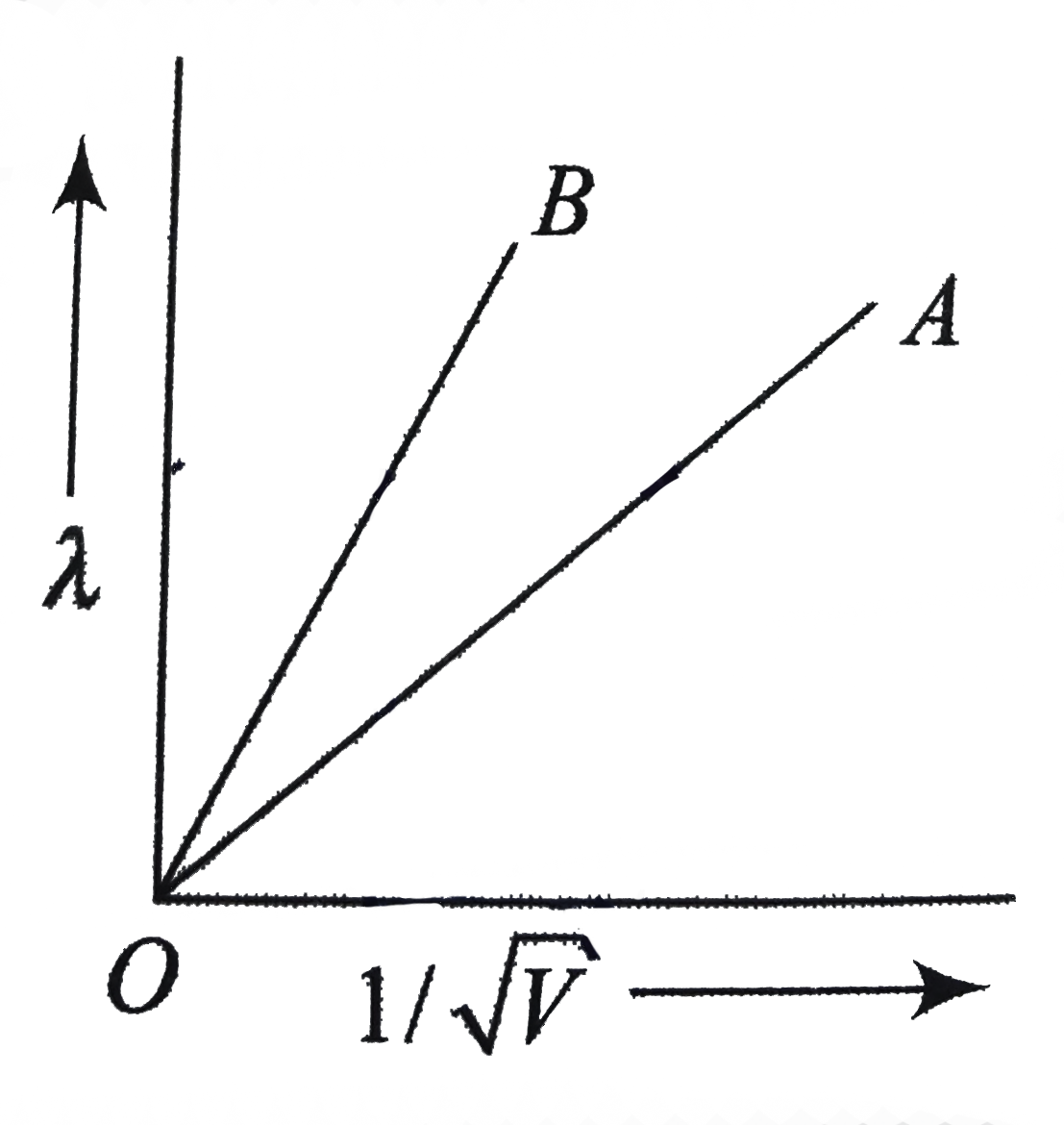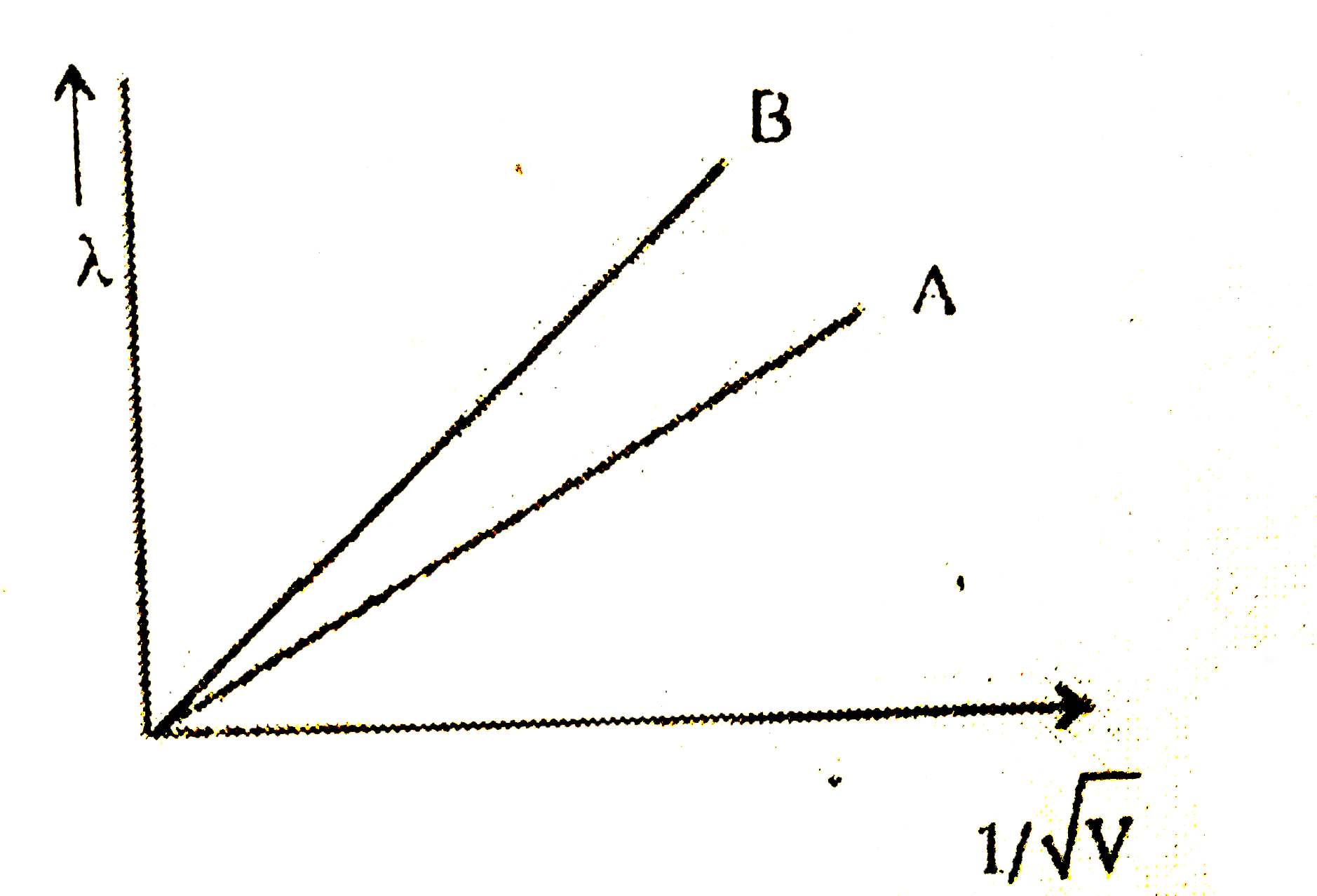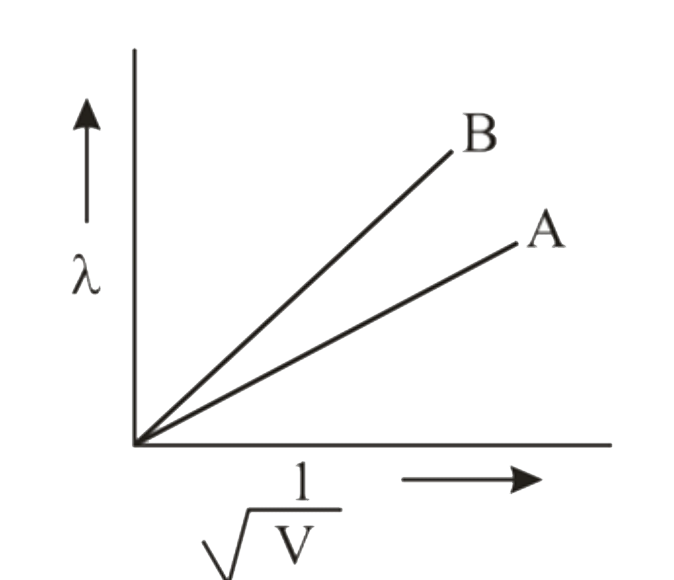
The two lines A and B in fig. shoe the phot of de Broglie wavelength (λ) as a function of 1√V(V is the accelerating potential) for teo particles having the same charge. Which of the two represents the particle of heavier mass?
In terms of accelerating potential V, the de Broglie wavelength of a charged particle is given by
λ=h√2meV …(i)
Where e is charge and m is mass of the particle. Equation (i) represents a straight line, whose slope is h√2me. The slope of the line is inversely proportional to √m. since the slope of line A is lesser, it represents the particle of heavier mass
Topper's Solved these Questions
- PHOTOELECTRIC EFFECTBOOK - CENGAGE PHYSICSCHAPTER - PHOTOELECTRIC EFFECTEXERCISE - Exercise 3.2
8 Videos
- PHOTOELECTRIC EFFECTBOOK - CENGAGE PHYSICSCHAPTER - PHOTOELECTRIC EFFECTEXERCISE - Subjective
16 Videos
- PHOTOELECTRIC EFFECTBOOK - CENGAGE PHYSICSCHAPTER - PHOTOELECTRIC EFFECTEXERCISE - Examples
8 Videos
- NUCLEIBOOK - CENGAGE PHYSICSCHAPTER - NUCLEIEXERCISE - QUESTION BANK
59 Videos
- RAY OPTICSBOOK - CENGAGE PHYSICSCHAPTER - RAY OPTICSEXERCISE - DPP 1.6
12 Videos
Similar Questions
Two lines, A and B, in the plot given below show the variation of de-Broglie wavelength, λ versus 1/√V, where V is the accelerating potential difference, for two particles carrying the same charge. Which one of two represents a particle of smaller mass?

View SolutionPlot a graph showing variation of de-broglie wavelength λ versus 1/√V, where V is accelerating potential for two particle A and P carrying same charge but of masses m1andm2(m1>m2). Which one of the two represents a particle of smaller mass and why?
View Solution
Knowledge Check
de Broglie wavelengths of two particles A and B are plotted against (1√V) , where V is the potential on the particles. Which of the following relation is correct about the mass of the particles ?
 AmA=mBBmA>mBCmA<mBDmA≤mB
AmA=mBBmA>mBCmA<mBDmA≤mBde Broglie wavelengths of two particles A and B are plotted against (1√V) , where V is the potential on the particles. Which of the following relation is correct about the mass of the particles ?
 AmA=mBBmA>mBCmA<mBDmA≤mB
AmA=mBBmA>mBCmA<mBDmA≤mBThe de-Broglie wavelength λ associated with charged particle of charge q, mass m and potential difference V is
Ah√2mqVBh2√2mqVCh√mqVDh√2qV
Plot a graph showing variation of de-broglie wavelength λ versus 1/√V, where V is accelerating potential for two particle A and P carrying same charge but of masses m1andm2(m1>m2). Which one of the two represents a particle of smaller mass and why?
View SolutionA proton and an a-particle have the same de-Broglie wavelength. Determine the ratio of
their accelerating potentials
View SolutionA proton and an α-particle have the same de-Broglie wavelength. Determine the ratio of
(i) their accelerating potentials (ii) their speeds.
View SolutionFind the ratio of de Broglie wavelength of an α -particle and a deutron if they are accelerating through the same potential difference
View SolutionDraw a graph showing the variation of de Broglie wavelength of a particle of charge q and mass m with accelerating potential. Proton and deuteron have the same de Broglie wavelengths. Explain which has more kinetic energy.
View Solution
